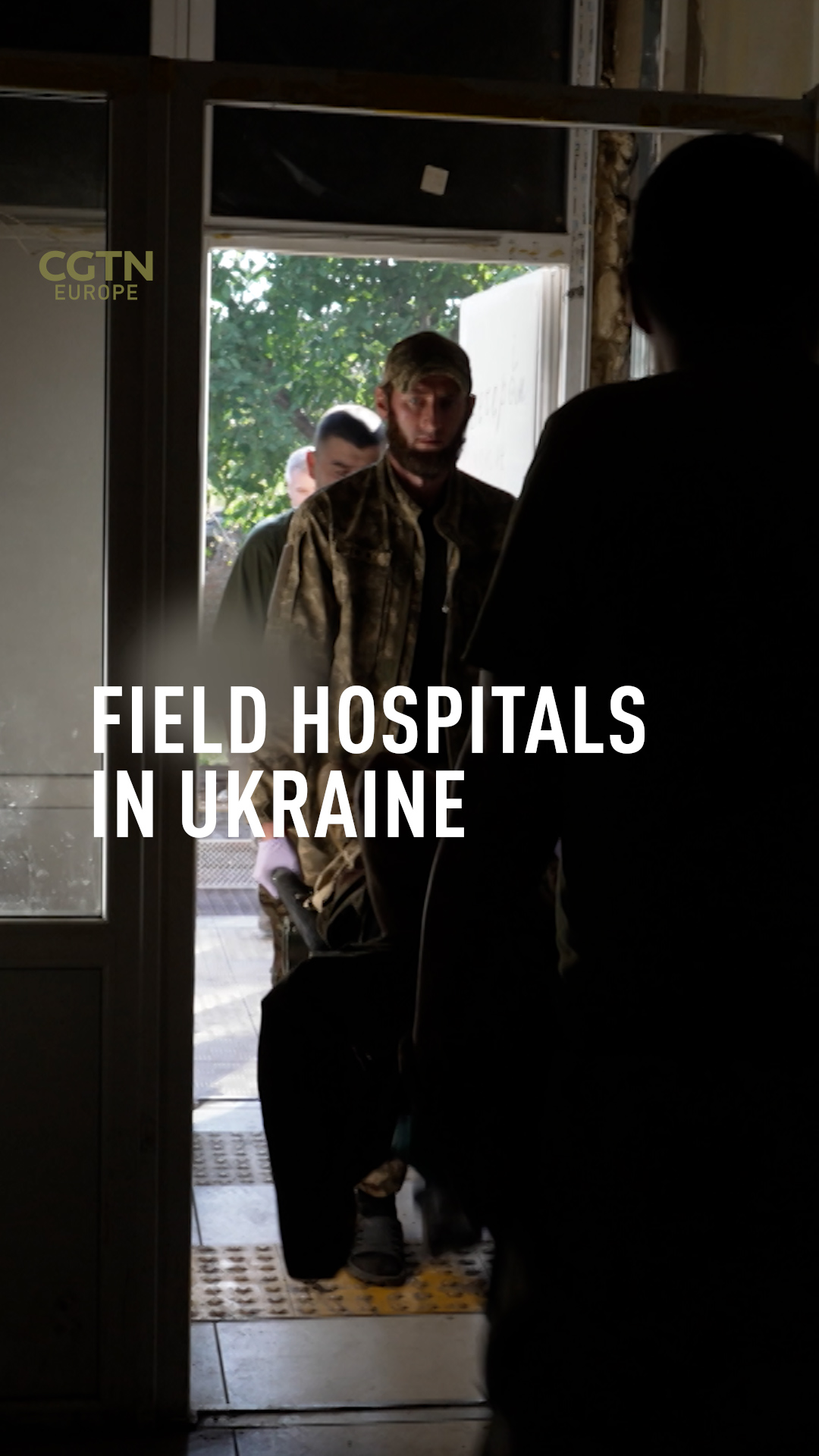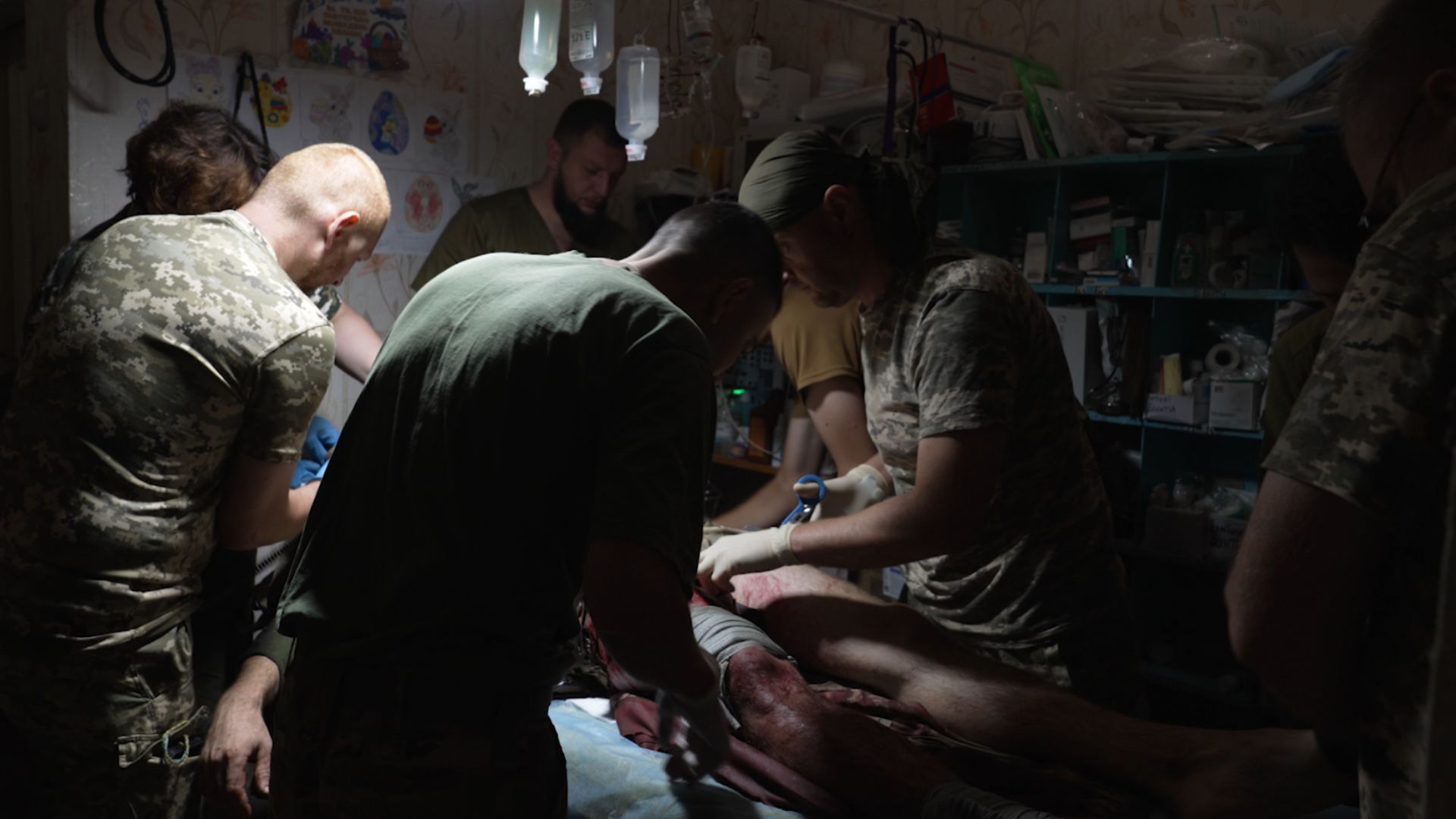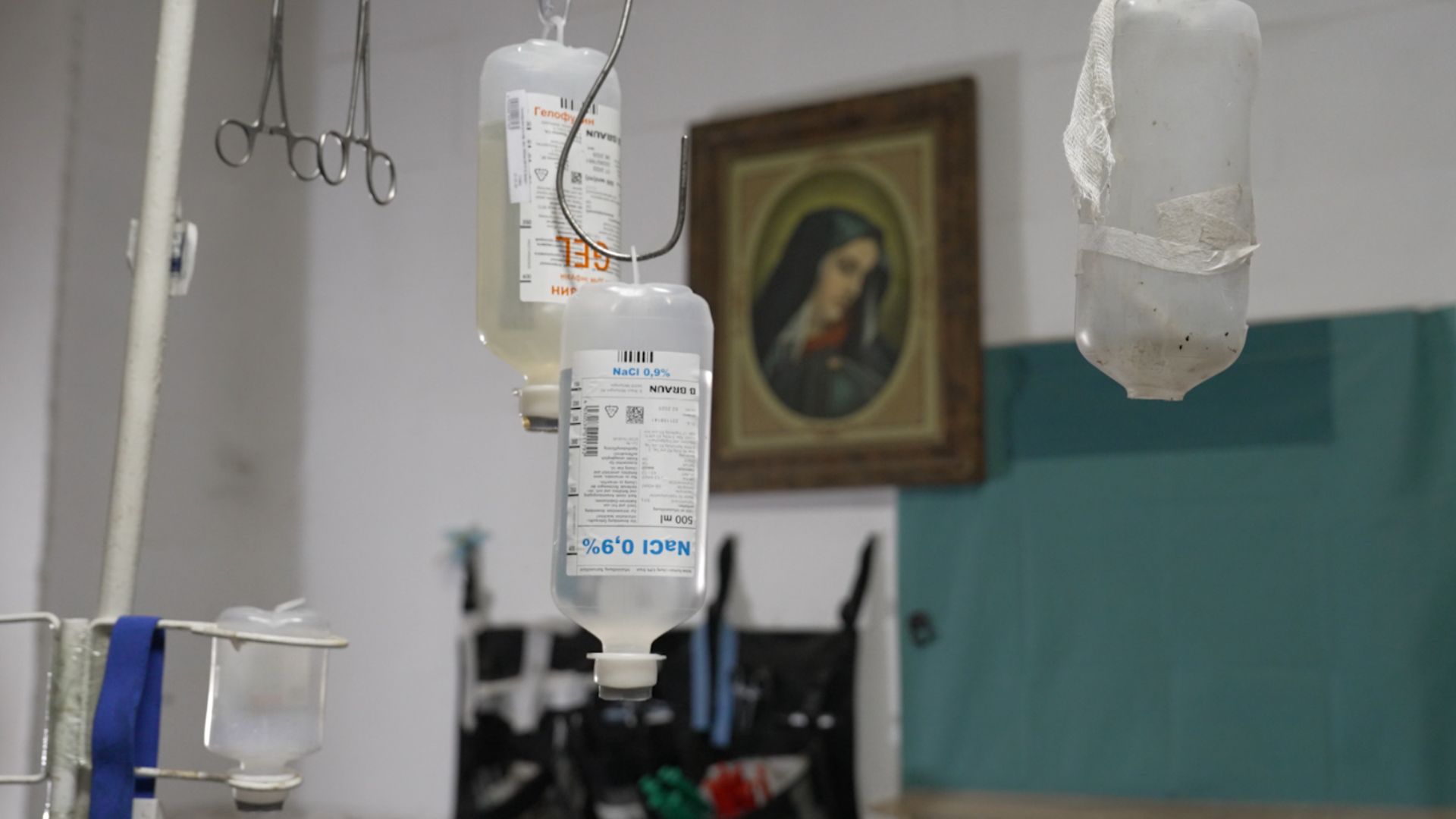01:21

Field hospitals are crucial to the Ukrainian army. Positioned near the frontline, these stabilization points, as they're referred to, treat injured soldiers. Some have cuts and bruises but others need emergency medical care. Not all of them can be saved.
Bakhmut, which has been at the center of intense fighting since May last year, is home to one such hospital. Thousands have died fighting in the area and many of the injured come to hospitals like this one.
Before the war, Dr Denys Sholom worked as a pediatric anesthetist at a hospital, but now he's a Commander in the medic company of the 5th Assault Brigade. Inside the Bakhmut field hospital, he reveals the level of expertise at work.
"The stabilization point is a primary point to provide medical care to soldiers after they've received first aid on the battlefield," he says to CGTN. "It's the closest location to the battle… and there are specialist medics here, but we're not combat medics. We are specialist doctors: surgeons, anesthesiologists and traumatologists."

A soldier with a leg wound is operated on in the stabilization point. /CGTN
A soldier with a leg wound is operated on in the stabilization point. /CGTN
It's not an easy life for the staff working here. Medics work around the clock and sleep when they can. Anastasia is a nurse in the Fifth Brigade. She says dealing with serious injuries on a daily basis is taking its toll.
"I feel sorry for everyone, and each injury is serious in its own way," she says. "Many people tell me I should not take it to heart. But I can't do that. I remember everyone. For example, recently, a soldier was wounded. He had to have both his legs amputated....afterwards I went to visit him.”
Just minutes later, a soldier is carried in. He has an open leg wound. The medical team springs into action. His wounds are bandaged, and his treatment details are carefully documented. He's treated quickly, so he can be transferred by medics to a fully equipped hospital.
On the way to the hospital they try to keep the soldier comfortable, but that's easier said than done on bumpy tracks. The ambulance is driven quickly to a ward away from the warzone.

The stabilization point is always busy. /CGTN
The stabilization point is always busy. /CGTN
Every day there's stress, fatigue and a flood of emotions. Lives are saved, because medics often make up to five such trips every day. Tanya, another medic, describes the injuries she encounters most often.
"The most common injuries are from bullets and shrapnel, and gunshot fragmentation," she says. "At the start of the war, we saw lots of shrapnel wounds, but now we see bullet wounds more often. They vary from light wounds, scratching the skin for example: to heavy wounds and amputations right on the battlefield after explosions and so on."
Anastasia worries what impact the conflict will have on her over time. "I'm close to all these soldiers," she adds. "They are all ours, all ours, all of them. It's a pity, a great pity. But you have to accept it. You can't just sit and think - no, you have to work. You just try to do your work, but later of course, it catches up with you over time."
For now, she has little time to think. More soldiers will soon arrive at the hospital and the medics will be back on duty. The work is ceaseless.

Subscribe to Storyboard: A weekly newsletter bringing you the best of CGTN every Friday